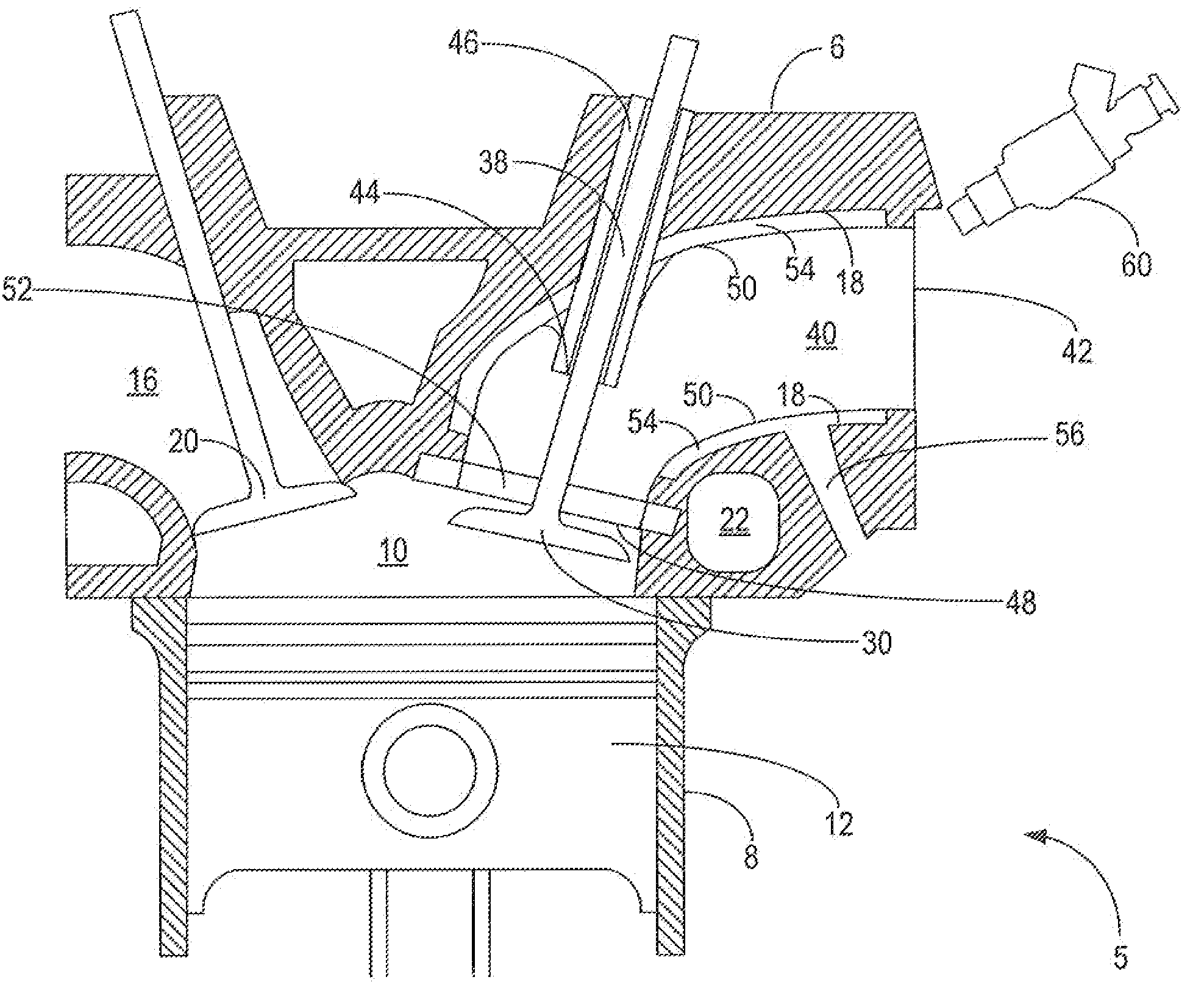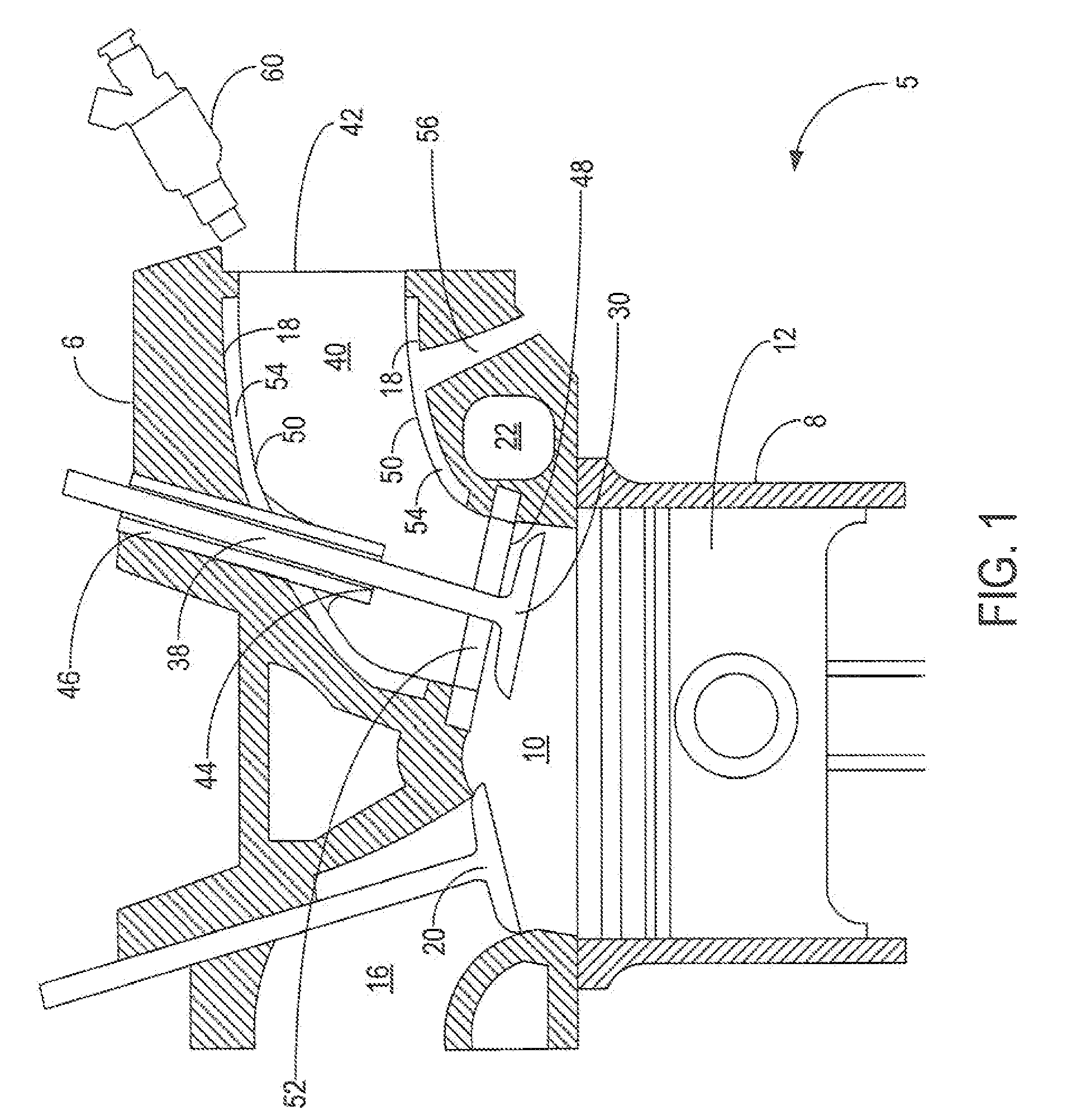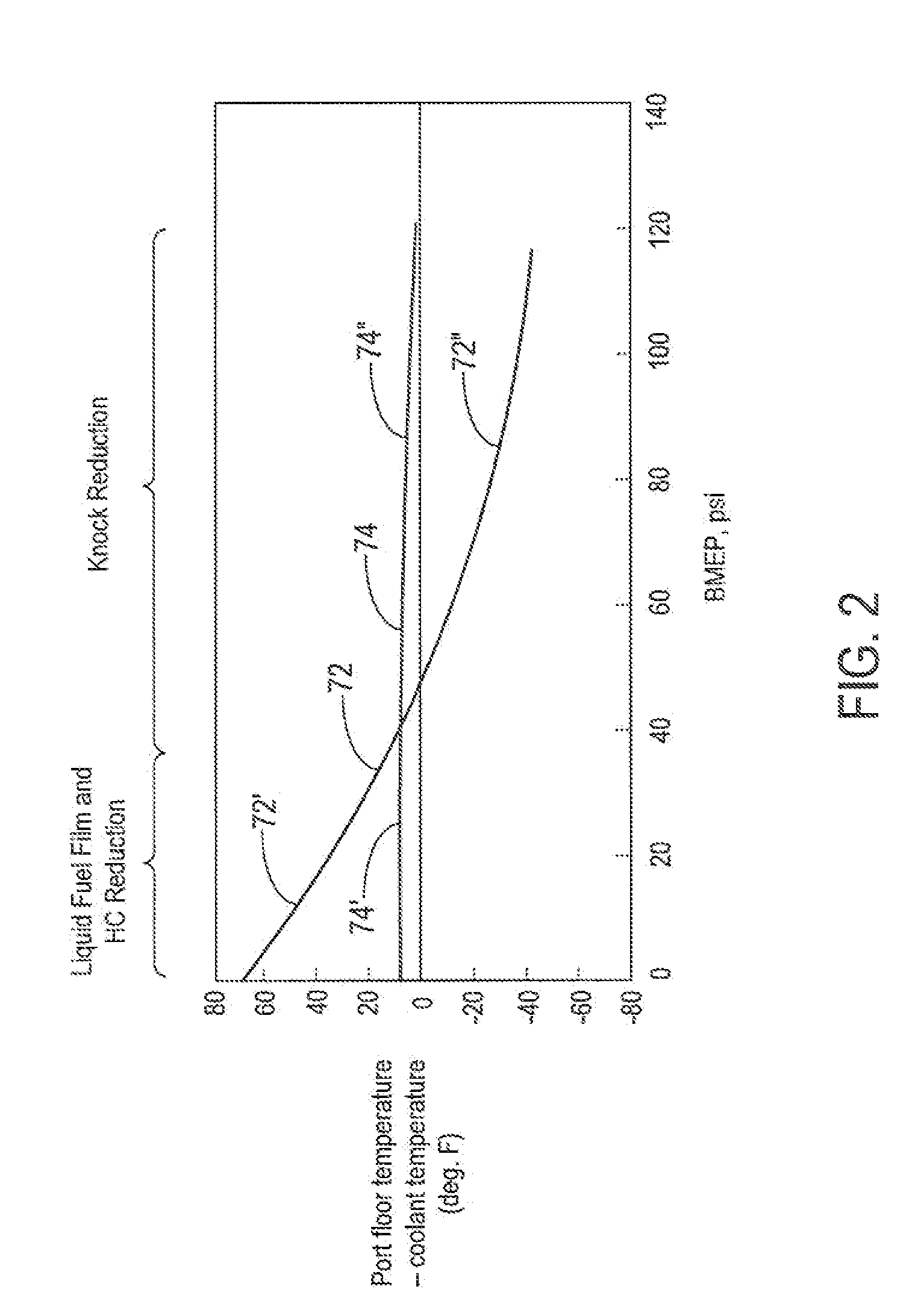Low-thermal-inertia intake ports for port-injected, spark ignition engines and an associated manufacturing method
a technology of intake ports and spark ignition engines, which is applied in the direction of electric ignition installation, machines/engines, mechanical equipment, etc., can solve the problems of low fuel efficiency, slow warm up and constant temperature of conventional intake ports, and unsatisfactory emissions, fuel efficiency, performance, etc., to achieve low thermal inertia characteristics, improve cold-start emissions, and improve mixture preparation
- Summary
- Abstract
- Description
- Claims
- Application Information
AI Technical Summary
Benefits of technology
Problems solved by technology
Method used
Image
Examples
Embodiment Construction
[0017]In various exemplary embodiments, the present invention provides an intake port design and associated manufacturing method with a low thermal inertia characteristic, thereby decoupling the surface temperature of the intake port from that of the coolant through use of an air gap formed between a portion of the intake port wall and cylinder head. Because of this thermal decoupling, at idle and part-throttle, the intake port is at a higher surface temperature yielding better cold-start emissions, better mixture preparation, and less dense intake charge (“thermal throttling”) for better fuel economy. At wide-open-throttle (WOT), the intake port is at a lower surface temperature yielding better volumetric efficiency for improved torque and reduction in knocking tendency enabling higher compression ratio for improved fuel economy.
[0018]Idealized thermal conditions for intake port walls may be characterized as follows for cold start and warm-up, light load operation, and high load an...
PUM
 Login to View More
Login to View More Abstract
Description
Claims
Application Information
 Login to View More
Login to View More - R&D
- Intellectual Property
- Life Sciences
- Materials
- Tech Scout
- Unparalleled Data Quality
- Higher Quality Content
- 60% Fewer Hallucinations
Browse by: Latest US Patents, China's latest patents, Technical Efficacy Thesaurus, Application Domain, Technology Topic, Popular Technical Reports.
© 2025 PatSnap. All rights reserved.Legal|Privacy policy|Modern Slavery Act Transparency Statement|Sitemap|About US| Contact US: help@patsnap.com



